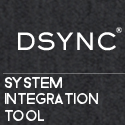This article is an attempt to provide basic information about disk naming and partition numbering conventions, in non-technical terms, to those new to Linux. I believe a basic understanding of all the aspects concerning how a disk is referenced and partitioned will put you in a better position to troubleshoot installation and disk-related problems.
Basic information about partition tables and the difference between primary and logical partitions will be covered.
Hard Drive Naming Convention: – The first thing you need to know is there is no “C drive” or “E drive” in Linux. There are equivalents, but when you come across a reference to a hard drive in a modern Linux system, you will typically see something like /dev/sda, /dev/sdb, /dev/sdc, … etc. The “dev” is short for device, and in this case, a block storage device. The “sd” is short for SCSI mass-storage driver. (SCSI stands for Small Computer System Interface.) For the rest of this article, the “/dev/” will be dropped, so all references to hard drives and partitions will start with the last part only.
|
|
|


Leave a Reply